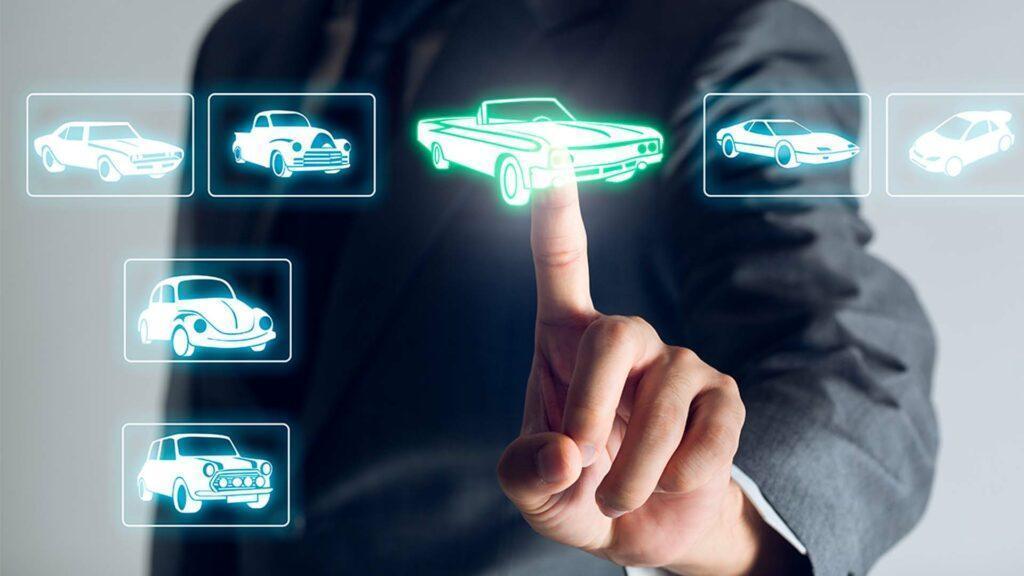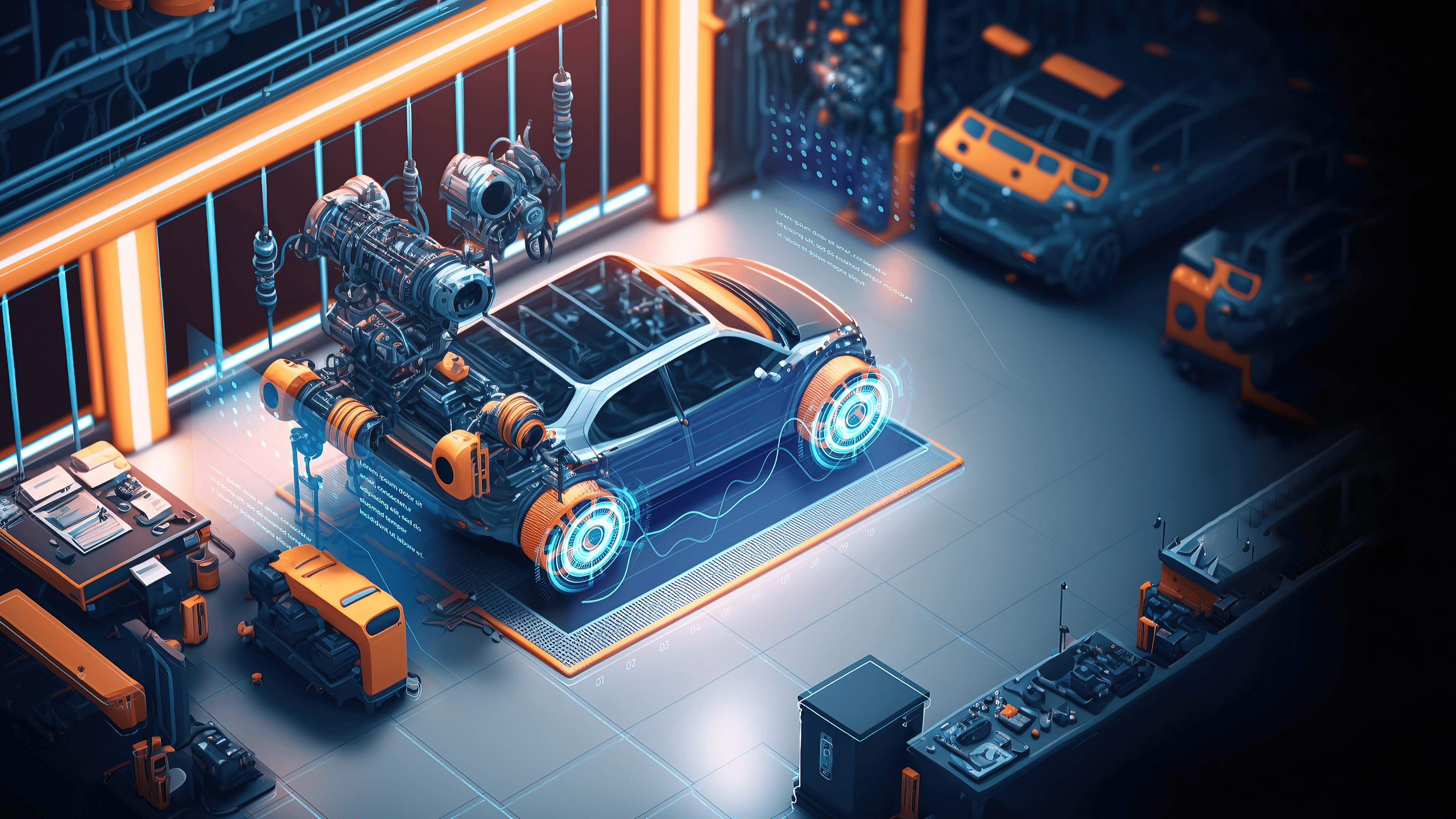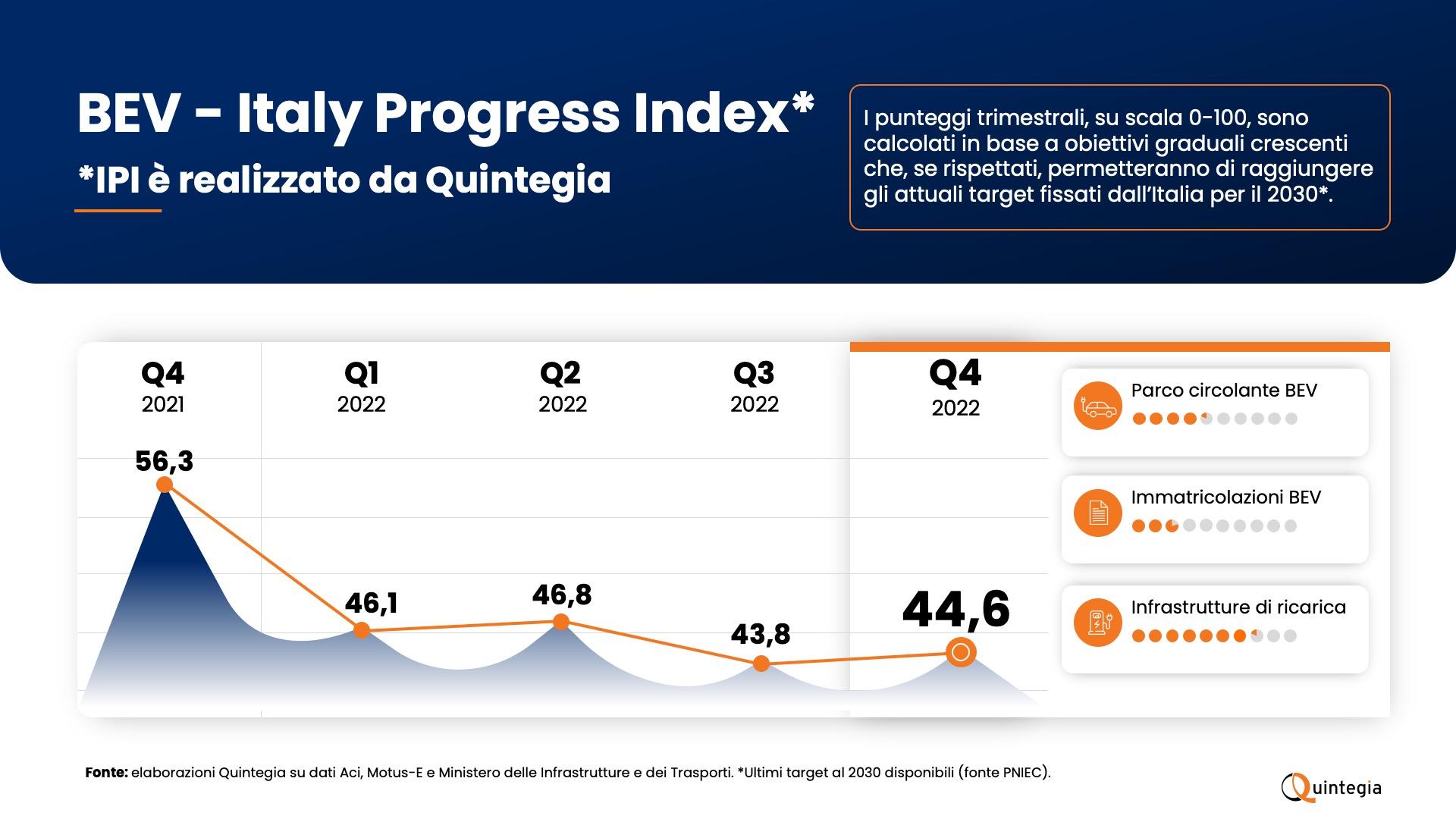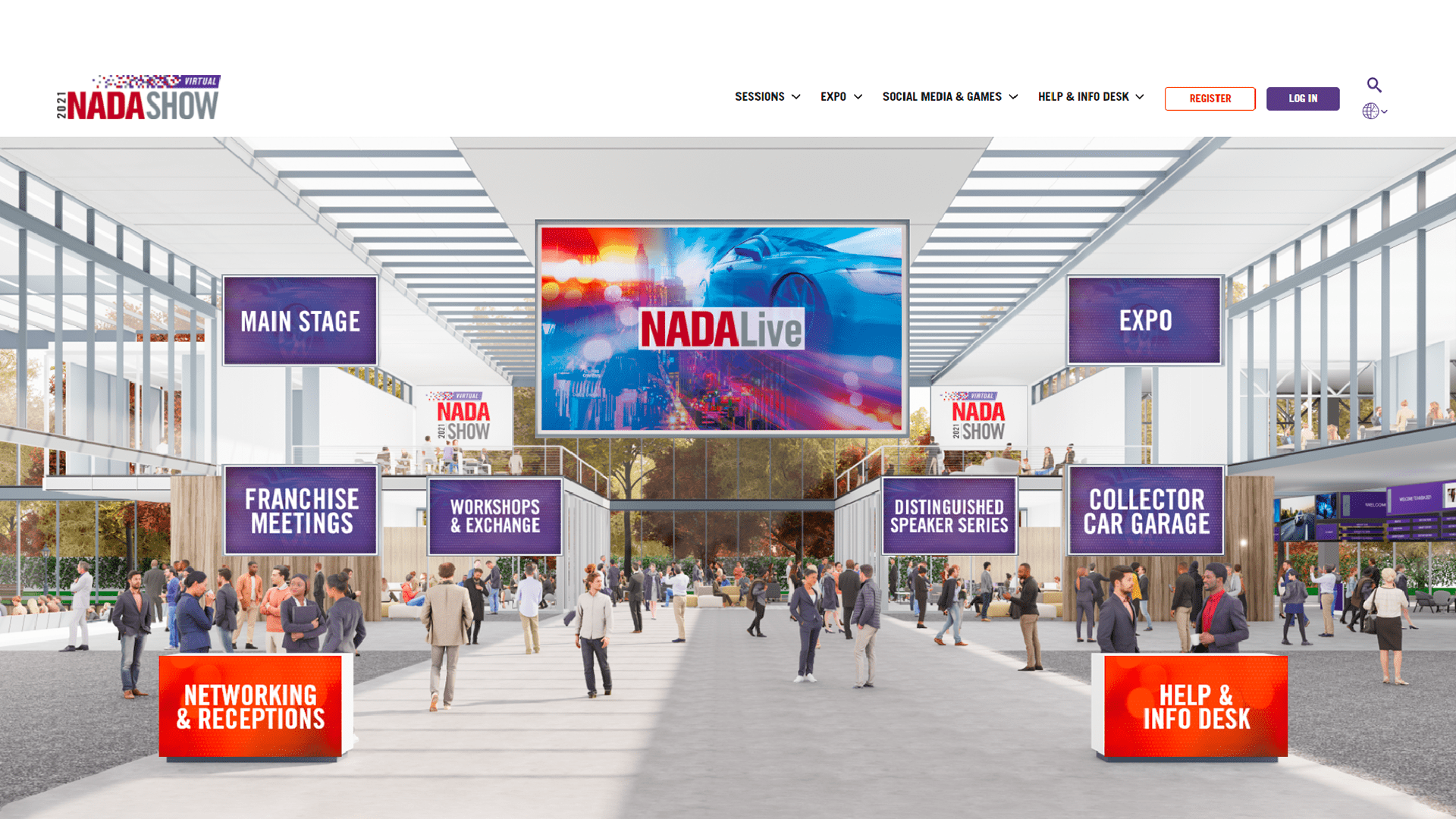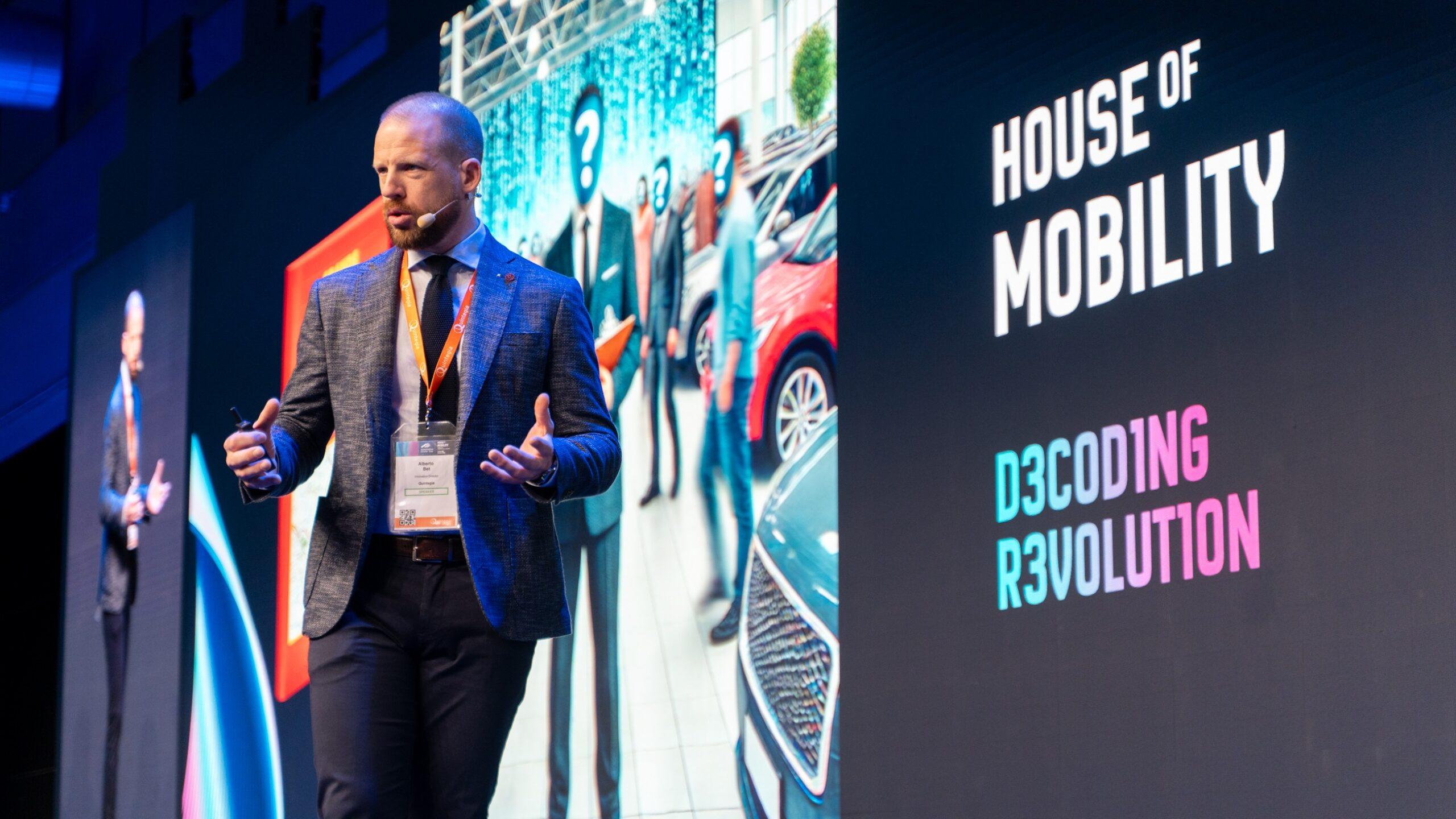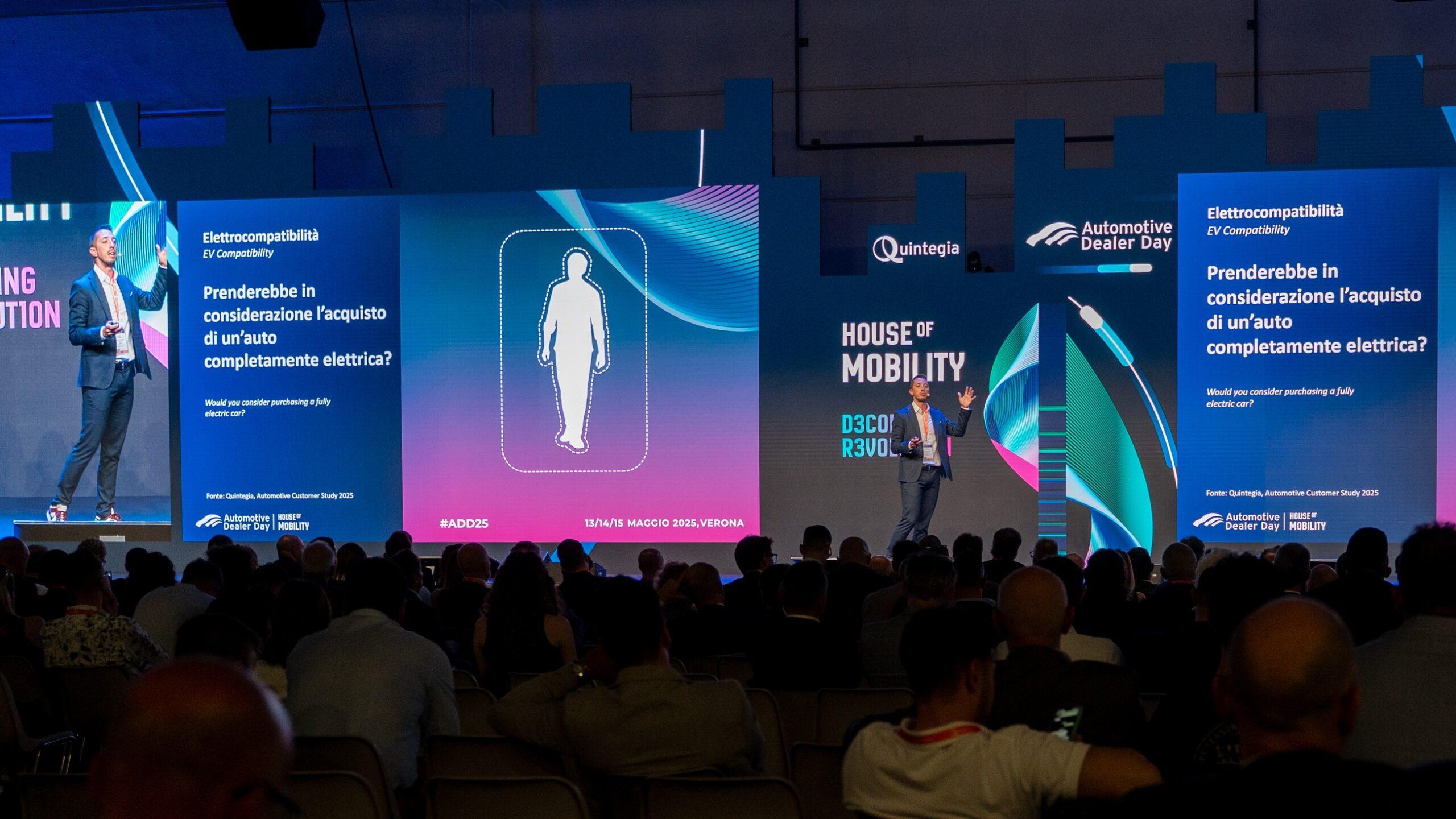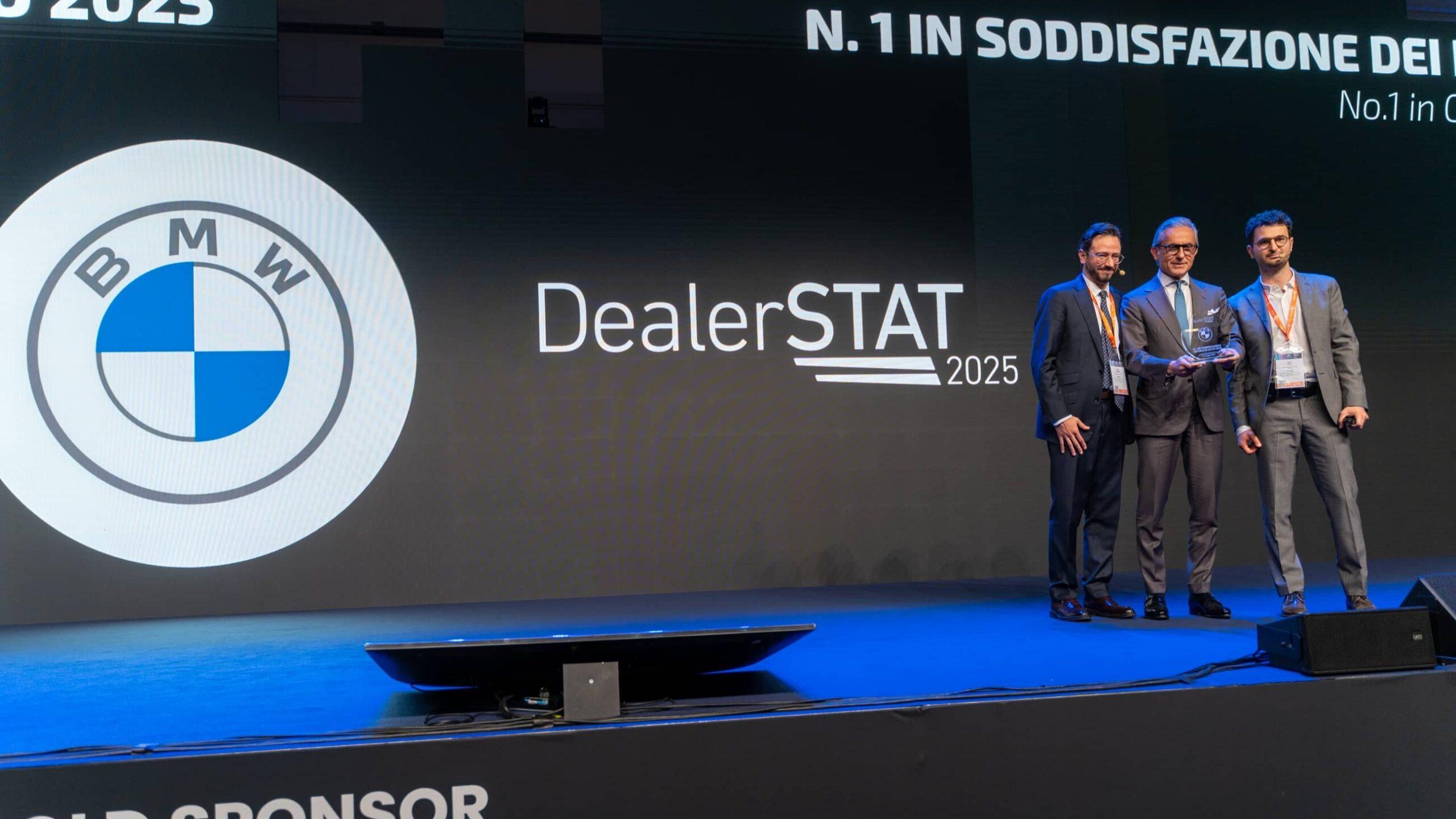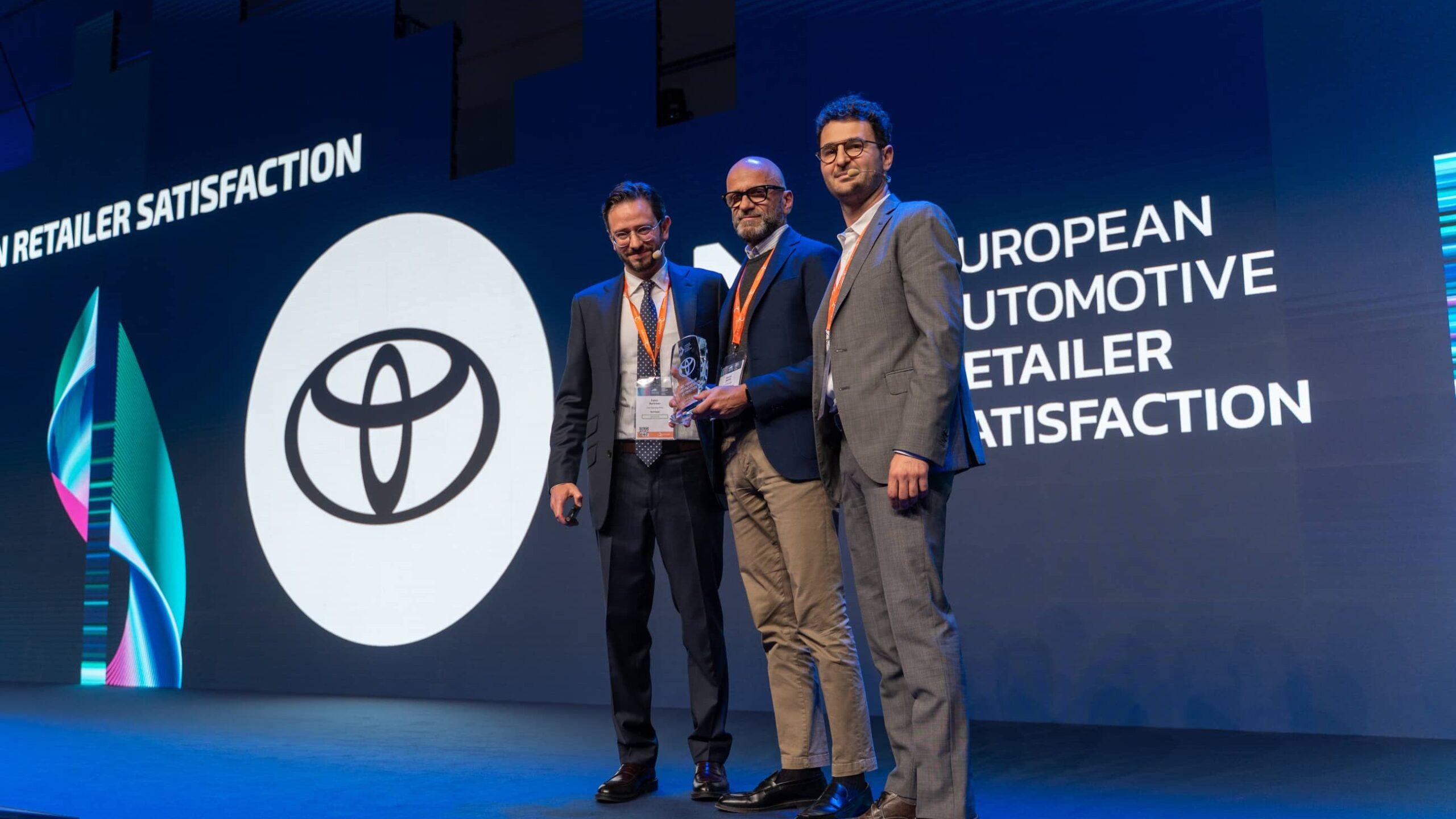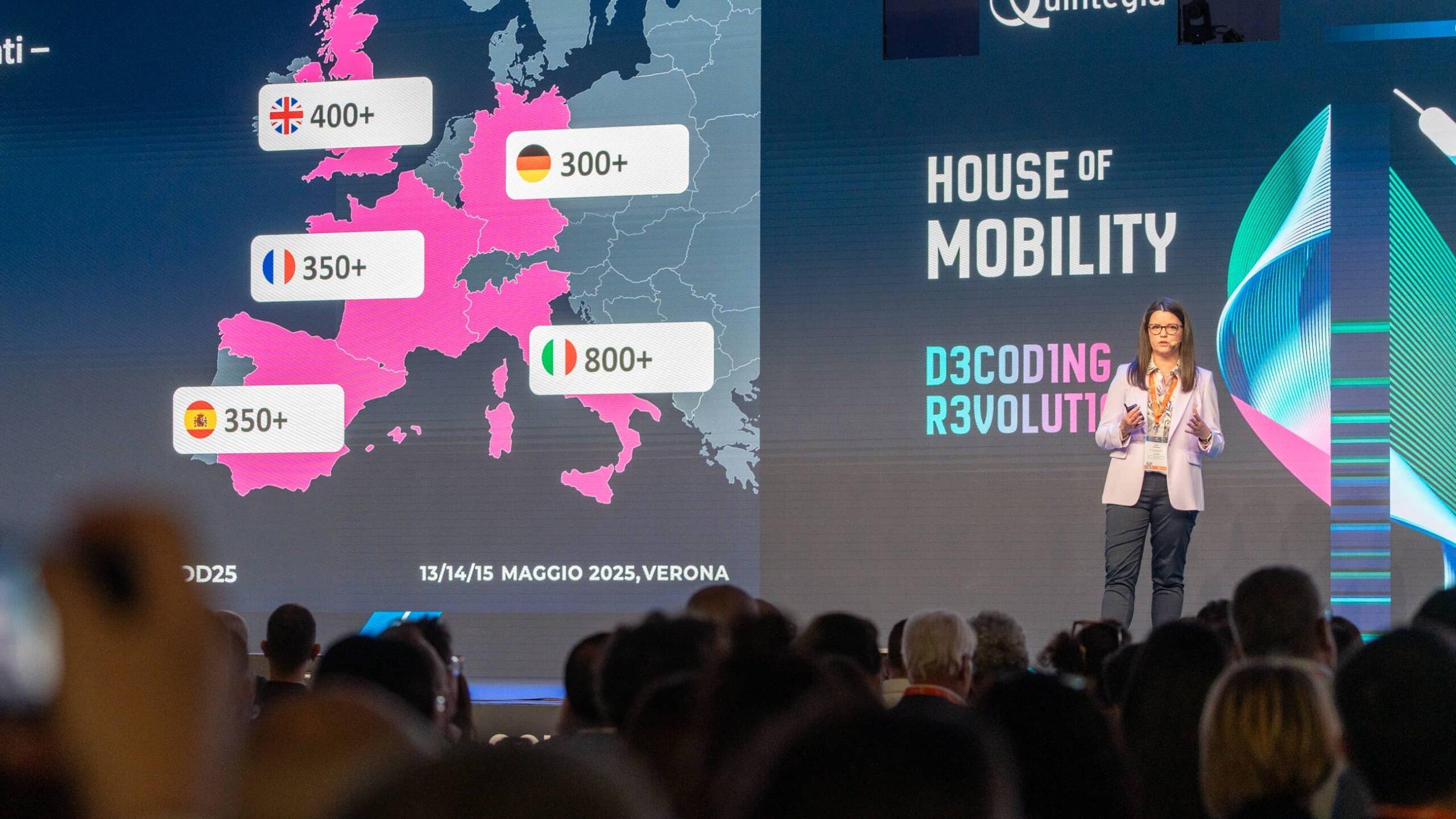Digitalization has been a key theme in Italian dealerships for several years, a transformation that increasingly affects all areas of the company. But what is the level of digitalization of auto distribution networks in Italy today?
An important consideration to answer this question is that to measure the level of digitalization, we need to take into account two dimensions: one we call “Attitude,” which is the digital mindset of the entire company, and the second represented by “Performance,” which is the results achieved in digital areas. By representing these two parameters on a Cartesian plane, we get a picture of the level of digitalization of the networks, as shown in the example below for three brands.
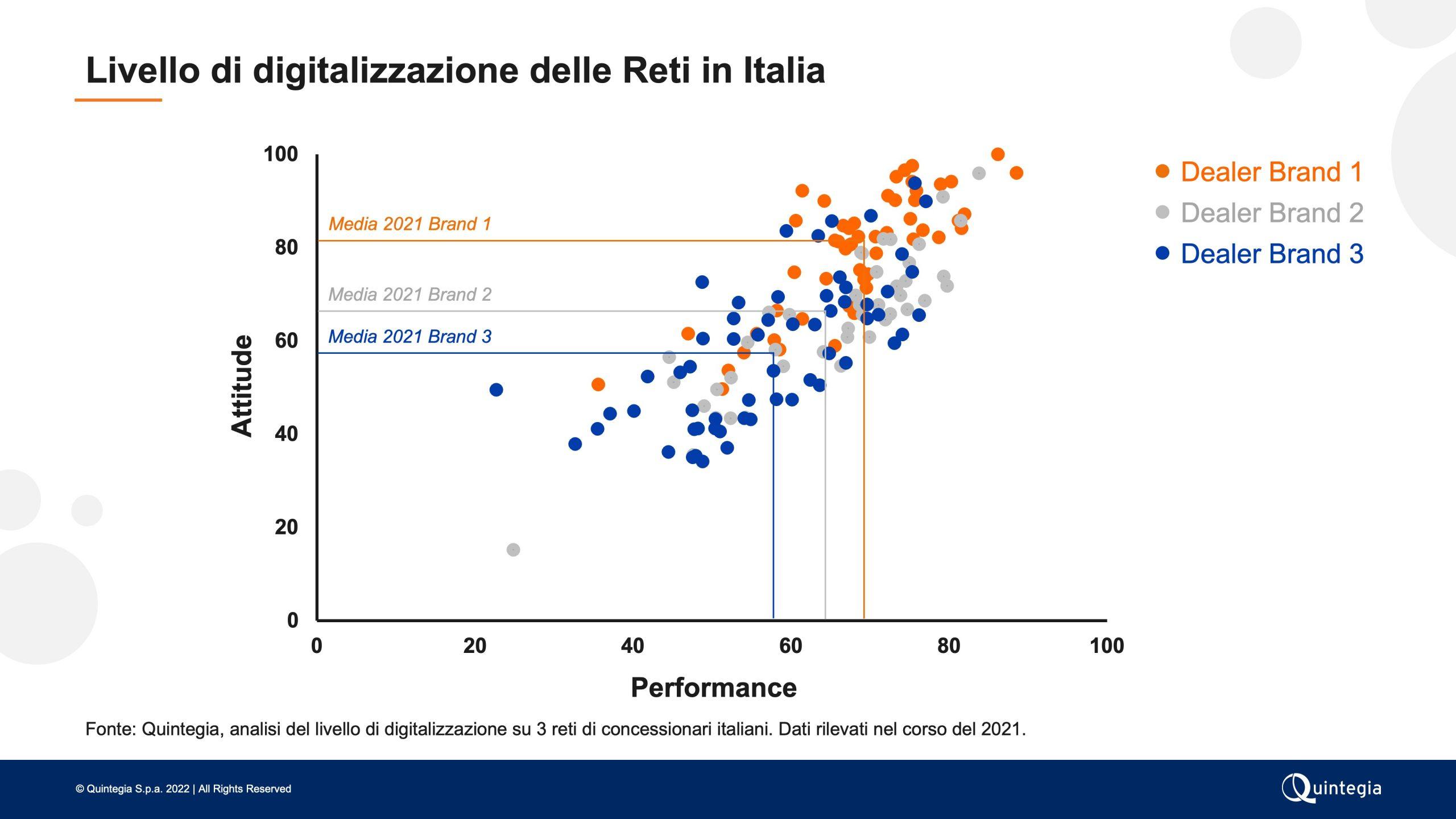
Source: Quintegia, analysis of the level of digitalization in 3 Italian dealer. Data collected in 2021.
It is evident that there are significant differences between dealerships, not only among dealers representing different brands but also within the same networks, with some dealers performing well and others yet to embark on a real digitalization of the company. In the last five years, the level has grown, but at different speeds among dealerships. Therefore, it is crucial for manufacturers to consider the various clusters with differentiated approaches in their support programs.
The digital marketing activities of dealerships have evolved significantly in recent years, with the introduction of dedicated communication teams, and the results are evident in terms of improved performance. From this perspective, a key point is the analysis and sharing of results obtained in digital activities: 40% of the dealers in the example constantly monitor KPIs, including the introduction of dashboards and aggregators with multi-level views of the company.
The drivers of digital transformation, in addition to people, are processes and technology. A very important data point is the adoption of CRM systems. Five years ago, 20% of dealers had a CRM, while today, 70% have adopted such a tool. However, this is not enough, as these systems are often underutilized, and there is a lack of a structured approach to managing customer information, which represents the true asset of the dealership. Customers are the element that allows for building differentiated and personalized actions for a quality customer experience that leads to long-term loyalty.
A strong point for many auto dealerships is their strong focus on lead generation and management, including the introduction of Business Development Centers that enable precise and qualified handling of incoming contacts and generate business opportunities. However, less attention has been paid to dealership branding activities, a front that is becoming increasingly important, especially with the growth of large entrepreneurial groups where the brand theme is becoming more central.
Looking to the future, it will be interesting to evaluate the evolution in terms of online sales. E-commerce, excluding some pioneers, is not a priority. We will see if dealerships (also driven by initiatives from automakers in this area) will embrace what has become a standard in all sectors.

